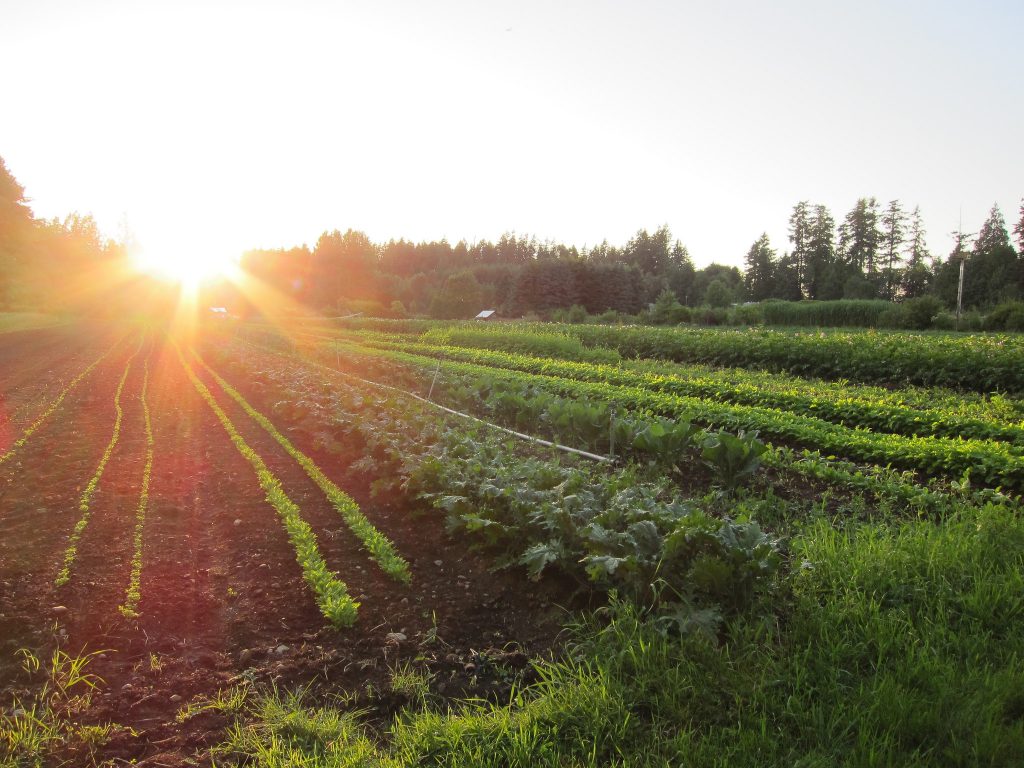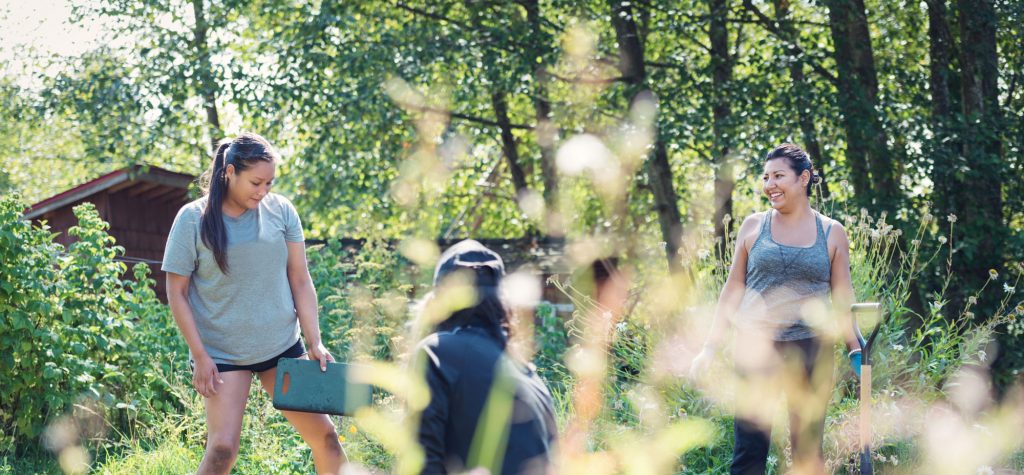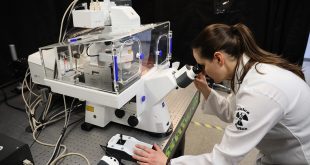Researchers probe the complexities of crop resiliency
Nestled in the south corner of the University of British Columbia’s (UBC) Vancouver campus, a bustling metropolitan academic centre, visitors are often surprised to find a perfect little farm. But this is no ordinary farm. A closer look reveals leading-edge research equipment set up amid fields of crops where scientists in boots and jeans spend their days exploring the complexities of plant and soil resiliency. This living laboratory is the UBC Farm – run by the Centre for Sustainable Food Systems (CSFS), it’s a hub for teaching and research, on the front lines of a sustainable, food-secure future.
The impact of climate change on the world’s ecosystems and food production is no doubt one of the greatest challenges of our time. It’s hard to ignore the realities in Canada. From the wildfires that destroyed 1.5 million acres around Fort McMurray in 2016 to heavy rainfalls affecting soy and potato crops in Manitoba’s Red River Valley, dramatic weather patterns are taking their toll on the human food chain.

Scientists at research stations like the 24-hectare UBC Farm are doing their part to build crop resiliency and food security. Here, 35 researchers are working on 38 active projects. Among them, Sean Smukler is leading a team that’s measuring greenhouse gas (GHG) emissions in various crops, trying to identify ways to reduce the damage. Smukler, an associate professor of Applied Biology and Soil Science at UBC, explains, “We also have projects that are focused on how to manage nutrients in the system so that we can produce the most economically effective crop as possible, while being cognizant of some of the environmental impacts.”
His team is probing how to increase carbon sequestration in soils, and they recently completed a baseline map of the entire Fraser Valley. As part of this, they took an inventory of the carbon stocks across the valley and quantified the impacts of land use and land management on soil. To extract GHG samples, the team uses a unique system of specially designed auto-chambers, custom built by the department’s biometrology group, together with a Picarro analyzer – a cutting-edge Cavity Ring-Down Spectrometer, that synthesizes the data.

To supplement meteorological stations that measure conditions like rain, temperature, pressure and wind speed, most of the affiliated researchers on the farm bring their own equipment or transport their samples to the university’s indoor laboratory spaces. There are plans for a potential new building that would house additional laboratory amenities, for which discussions are underway with local Indigenous groups that own the land, as well as the university.
Laura Morillas, the farm’s research manager, says studies involving soil are critical for plant resiliency. She points to two current projects looking at the benefits of soil microbes. Researchers Cara Haney and Juli Carrillo are finding that some strains can boost a plant’s resiliency, so they are probing exactly which microbes these are and how they can be encouraged to multiply. It can be challenging, says Morillas; “Some microbes may grow well in lab conditions, but when you try to inoculate soil in the field, climatic conditions are going to be much more variable.” The two researchers are also testing whether microbes can help in pest management.
Three other projects, funded through the Organic Science Cluster III, are exploring plant varieties that thrive in regional organic farming systems, ecological pest management and efficient use of nutrients in organic farming. It takes an annual operating budget of $1 million to run this little corner of research heaven, including revenue from food sales such as its weekly Farmer’s Market, program and research activities, faculty and UBC funding, donations, subsidies and grants. The UBC Farm is supported by several federal, provincial and academic agencies, like CFI, SSHR and NSERC, as well as some private sponsors.
To share their research with farmers, policy makers and other stakeholders, the UBC Farm team launched a web platform in 2018 called BC FoodWeb. “It’s basically an online platform for translating research papers that in many cases are difficult to understand,” explains Morillas. The website includes easy-to-understand research briefs for public consumption.

The CSFS also recently hired its first data manager. “We are going to face very complicated times, and data sharing is going to be key,” Morillas says. “We cannot be limited and working in our independent silos anymore.” They also introduced a new data sharing protocol to encourage researchers, aided by staff, to post their findings to the university’s central data repository, Dataverse.
Moving forward, Morillas says the UBC Farm is looking to transform itself into a long-term social-ecological network that would link research stations across Canada. “For that reason,” she says, “we launched two programs aimed at monitoring biodiversity in agro-ecosystems and water use to help us understand how efficient our irrigation practices are and how to reduce the water footprint of our crops.”
For Smukler, who currently serves as chair for the Agricultural Climate Adaptation Research Network (ACARN), such national and global collaboration is key. ACARN is a hub for climate change adaptation research, education and extension strategies in the B.C. agriculture sector.
Smukler feels B.C. is really leading the way in climate adaptation and he would like to see greater interprovincial collaboration. That’s one reason ACARN was developed. “But on a national scale, I don’t see that happening,” he suggests.
ACARN coordinates projects and shares information on weather, soil, crop and pest management data. But it’s far more than that, says Smukler. He warns that climate change is slow and complex, and the public, including the farmers he works with, are not seeing its impact. “We aren’t really doing a good job anticipating future needs. Investment in infrastructure is critical,” Smukler adds. “Because the changes that we’re seeing are so gradual, unless we’re really anticipating what those changes are going to be in 30 years, there’s not really the incentive to make the big investments in infrastructure that need to
happen now.”
That’s why a primary goal for ACARN is to get information out to stakeholders. “ACARN’s role is to connect not only to farmers, but also to the public and help educate them and get them to realize that this is a problem,” Smukler explains, “and to identify some of the solutions and convey those to the public, as well as to train the next generation of scientists and extension workers.” He believes that because climate change is so complicated, the solutions need to be interdisciplinary.
Smukler works with farmers in the delta region of the Fraser River Valley, who pull irrigation from the river. As sea levels rise due to global warming, salt water will move farther up the river at unprecedented distances inland. He notes, “Access to freshwater irrigation may become challenging.”

The answer, Smukler says, lies in new infrastructures that respond and safeguard against global forces like droughts and flooding. “For example, flooding has already impacted production in various regions across the country. Some farmers have invested in infrastructure that can ameliorate those floods, like ditching and drainage, but unless there’s infrastructure across the region to move water away from those fields, their investment really doesn’t pay off.
“It basically requires an investment from the public, from taxpayers to recognize that this is a shared challenge. My fear is that the taxpayers are not going to be willing to pay for the price of climate change until it’s too late.”
According to Smukler, “We’ve got a lot of work to do to change the minds of the public and get them to really appreciate that this is a problem that has to be addressed really quickly here.”
Photo Credits: the University of British Columbia, UBC farm
 BioLab Business Magazine Together, we reach farther into the Canadian Science community
BioLab Business Magazine Together, we reach farther into the Canadian Science community





